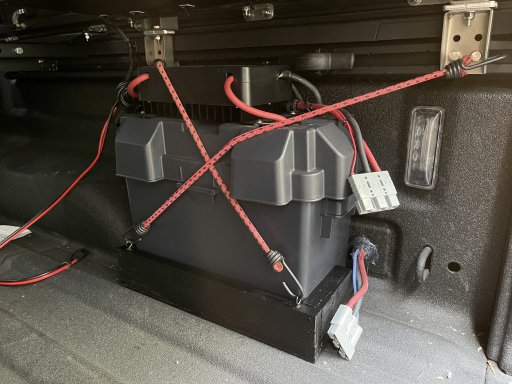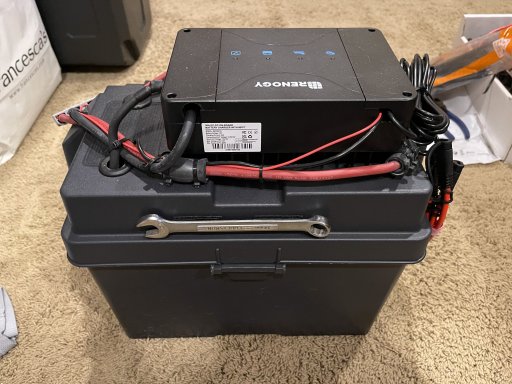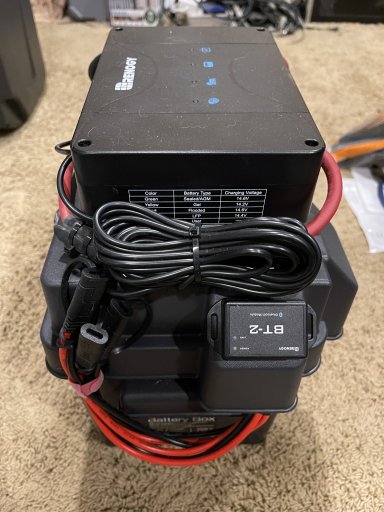Ok, it's a little awkward to explain, but... In short, my rig is set up as a part time/convertible. When I'm using for overlanding, I have a custom deck that I put in place of the spare tire cover that has mount points for a drawer cube, and eventually a slider for a fridge (currently eying a setpower rv45d). The WK2 doesn't really have anywhere to hide a dual battery system, and in all honesty I'm trying to do this part on a budget. So I'm looking for a way to power the fridge for up to maybe 36-48 hours without the vehicle running (can use solar to supplement that as well). The easy solution would probably be just getting something like a Bluetti EB70 or the like, plug it in to the 12v in the back of the Jeep (currently set to only have power when engine is running) and plug the fridge into it. That way, when vehicle is running, it would be charging, and keep the fridge
What I'm wondering, is since the cost of a power station like that isn't the cheapest, and has lots of things I wouldn't use (inverter, USB ports, etc...) is there a relatively easy DIY option that would let me achieve the same basic functions for a lower cost? I wouldn't need an inverter, or USB ports, or any of the other bells and whistles. Just a battery with a controller that could charge from 12v or solar, and allows passthrough so the fridge would run while it's charging. I've been searching around, but my knowledge in this area is pretty lacking, so not quite sure where to begin, or even what size battery I'd need to achieve that run time.
What I'm wondering, is since the cost of a power station like that isn't the cheapest, and has lots of things I wouldn't use (inverter, USB ports, etc...) is there a relatively easy DIY option that would let me achieve the same basic functions for a lower cost? I wouldn't need an inverter, or USB ports, or any of the other bells and whistles. Just a battery with a controller that could charge from 12v or solar, and allows passthrough so the fridge would run while it's charging. I've been searching around, but my knowledge in this area is pretty lacking, so not quite sure where to begin, or even what size battery I'd need to achieve that run time.











